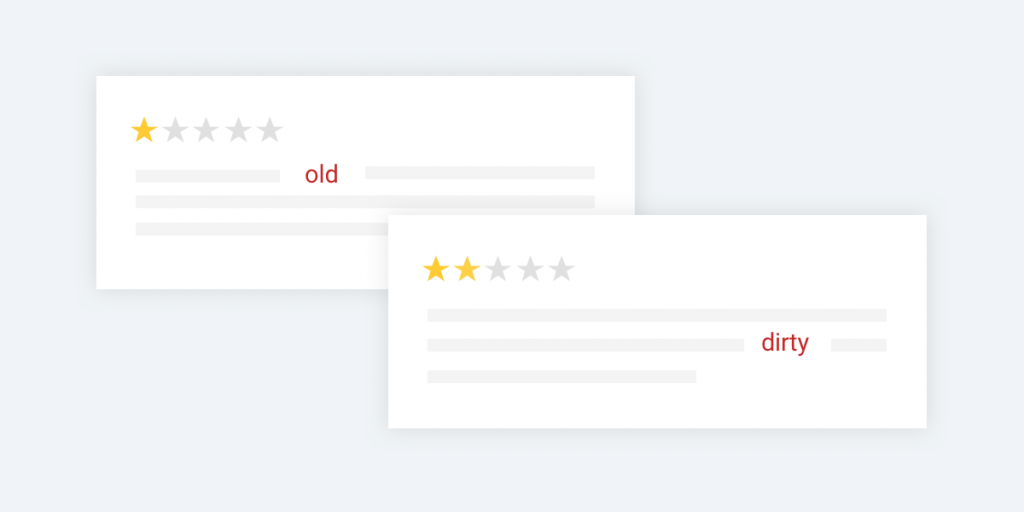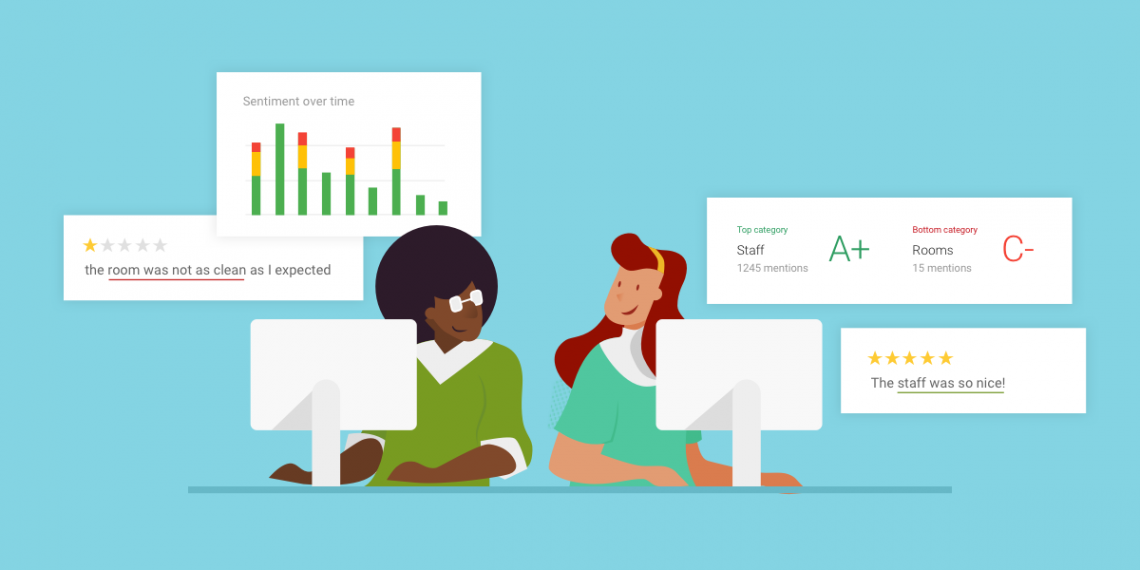Emotions play a huge role in the buying decisions of your customers. While it might sound impossible to measure how someone feels about your brand, there are actually ways to do it. For successful businesses, customer sentiment analysis tools are an integral part of every decision.
What are customer sentiment analysis tools?
Customer sentiment analysis refers to understanding how customers feel about your business. They might like you, dislike you, or be completely indifferent towards you. To find out, the first step is listening to what your customers are saying by monitoring your online reviews and social mentions.
Star ratings are the most obvious display of customer sentiment. Still, they don’t shed light on why your customers feel the way they do. This “why” will determine whether your customers do business with you again or not. If you dig deeper into the actual content of customer feedback, you can identify trending topics and underlying themes that are driving your ratings and revenue. This is difficult, if not impossible, to do without a text analytics software. The good news is that there are several solutions available that convert your customer feedback from across the web into straightforward insights.
If you’re on the fence about investing in social sentiment analysis tools, take a look at some of the benefits customer sentiment analysis can deliver for your business:
1) Optimize your marketing strategy
Are you running ads and posting to social at random, or are you following a strategic plan? How are you supposed to know whether you should change your marketing strategy and when? Your marketing efforts should not be one-sided blasts to the masses. They should be carefully tailored to your ideal customer. Sentiment analysis can not only give you a feel for what your customers think of your current approach and what could be improved; it also familiarizes you with the way your customers talk to each other and about your brand. Use this insight to adjust your high-level messaging so it resonates deeply with your target audience.

2) Measure ROI of marketing efforts
Follower count, survey scores, engagement metrics (likes, comments, shares, etc.), and website traffic are only one component of campaign success. The amount of positive discussions you generate is debatably even more important, as this extends the reach and longevity of your campaigns. Customer sentiment analysis tools allow you to measure how many positive and negative conversations have erupted within your audience. The combination of qualitative and quantitative metrics will reveal the overall ROI of each campaign.
3) Improve customer experience, products, and services
Positive feedback is always great, but negative feedback is especially useful — your customers are your most honest critics, and how they view your business matters most. Making adjustments based on insights from customer feedback will help you deliver experiences, products and services that will keep your customers coming back, and inspire them to spread the word to friends and family, bringing in new customers. For example, if a hotel chain notices a trend in negative mentions for “room”, customer sentiment analysis tools can let them dig deeper to find out what unhappy customers are saying about their rooms. They might discover mentions of “dirty” and “old”, telling them they need to refurbish their rooms and retrain their cleaning staff.

4) Generate more leads with customer sentiment analysis tools
By adjusting your marketing campaigns to resonate strongly with your target audience, you’ll increase engagement, traffic and conversions from online search and social media, bringing more high-quality leads to your sales team. At the same time, the improvements you make to your products, services and customer experience will boost customer satisfaction. Remember, happy customers are the best marketers. They act as your brand advocates, sharing their great experiences with friends, family and followers, bringing you even more customers.
5) Build strong customer relationships
Use messaging that strikes a chord with your customers and making tangible operational improvements based on feedback. This will prove to your customers that you understand them and care about their happiness. They won’t view you as a faceless business; rather, they will admire you as a personable, authoritative brand, and they’ll continue to choose you over competitors without a second thought.
6) Drive sales revenue
Ultimately, all of the benefits above result in more repeat customers. This is only the case if you make social media sentiment analytics a routine part of your marketing and operations strategies. Sentiments change and evolve, trends emerge and vanish. You need to be aware of every fluctuation so nothing takes you by surprise, and be willing to morph your strategy to fit customer expectations.
How can you capture customer sentiment?
As mentioned above, this is a multi-step process of collecting and analyzing feedback. It’s much easier with the help of social media sentiment analysis tools.
Birdeye, for example, lets you automatically get new reviews from your customers, view detailed reports of reviews and ratings over time and by location. You can leverage sentiment insights by running all your feedback through our Natural Language Processing (NLP) engine, Athena.
Watch a quick video to learn more about Birdeye’s Insights
Staying in tune with customer sentiment lets you make operational improvements, predict behaviors, exceed expectations and become an industry leader.

Originally published









